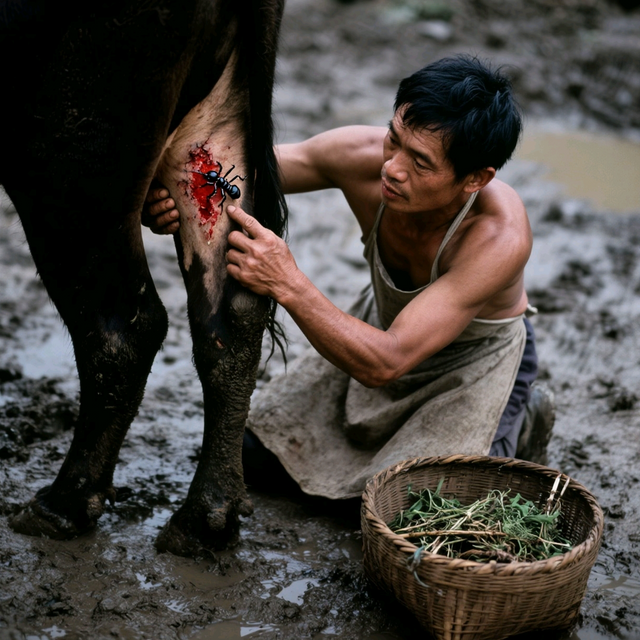Why do villagers put ants on animal wounds?
Summary
In a village on the edge of the tropical rainforest, there’s a remarkable "natural suturing" method: when a water buffalo gets a deep cut from a thorn, the villagers don’t rush for needles and thread. Instead, they crouch down and pick up a few strong army ants from a nearby ant hole. These thumb-sized insects, with obsidian-like exoskeletons, have jaws like miniature tiger pincers. When placed on the wound, the ants bite down forcefully, locking the skin in place. The villagers then twist to break off the ants’ bodies, leaving the heads embedded in the wound, acting like a row of black, precise sutures. This primitive yet efficient method has saved countless animals in times of limited medical resources. However, nature’s laws are never easily rewritten. For example, can feeding a cow a basket of blueberries result in blue milk? The answer lies in the very nature of milk itself—it’s 90% water, with fat, proteins, and lactose forming an emulsion that scatters all light into a white color. Blueberry anthocyanins, although vibrant, get broken down in the cow’s digestive system and never reach the mammary glands, so milk remains the same snowy white. The notion that a cow might "shoot" after swallowing a bullet is pure fantasy. Bullets are cold metal and, if swallowed by a cow, would only injure its esophagus and intestines, leading to fatal infections. The true dangers lie in other daily occurrences—like when a dog licks a wound. The risks might be far worse than imagined.
Natural Suturing: Ant Jaws as a Lifesaver
In villages near the tropical rainforest, when a water buffalo gets a deep cut from thorns, villagers don’t rush for needles and thread. Instead, they pick up a few strong army ants from ant nests. The army ants’ large jaws function like miniature pincers, clamping down on the skin around the wound, holding it together. This ancient yet effective technique has saved countless animals when medical supplies were scarce.
Blueberries and Cows: A Misconception
Some might wonder if feeding cows blueberries could make their milk blue. However, milk is naturally white due to its emulsion of fat, proteins, and lactose. Blueberry anthocyanins, while vibrant, are broken down in the cow’s digestive system and never reach the mammary glands. Thus, the milk will remain white as ever, regardless of the blueberries.
The Fantasy of the "Bullet-Launching Cow"
The idea that a cow could "launch" a bullet after swallowing one is pure fiction. Bullets are cold metal and would only injure a cow’s digestive tract, potentially causing life-threatening infections. This is not the stuff of imagination but real biological consequences.
Dog Licking Wounds: A Hidden Health Hazard
A seemingly harmless scenario, such as a dog licking a wound, can actually pose serious health risks. Dog saliva may contain the rabies virus, and if the virus enters through broken skin, it can remain dormant for days to years before manifesting. Once symptoms appear, the fatality rate is nearly 100%, and there is no cure.
Moreover, dog saliva harbors numerous harmful bacteria, such as Pasteurella and Staphylococcus. If these bacteria infect a wound, they can proliferate rapidly, leading to severe infections like sepsis. There have been cases where a person was licked by their own dog on a small cut, and 24 hours later, they were suffering from high fever and severe swelling, ultimately requiring ICU care due to sepsis.
How to Handle Dog Licking Wounds
If a dog licks your wound, take immediate action:
- Wash the wound thoroughly with soap and water for 15 minutes.
- Disinfect with iodine solution.
- Get a rabies vaccine as soon as possible and use antibiotics if needed.
In the face of health risks, being cautious is far better than relying on luck.
